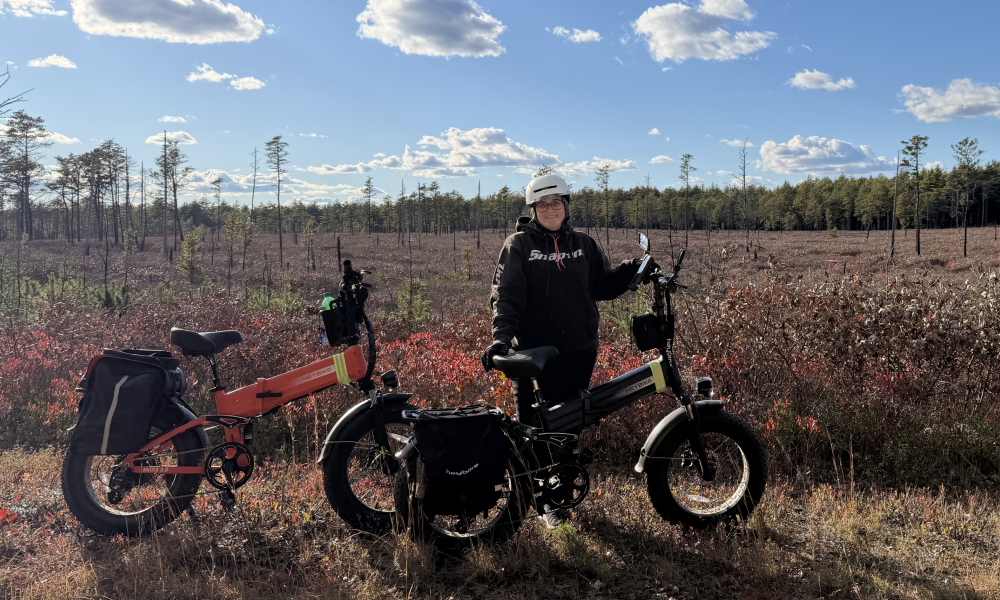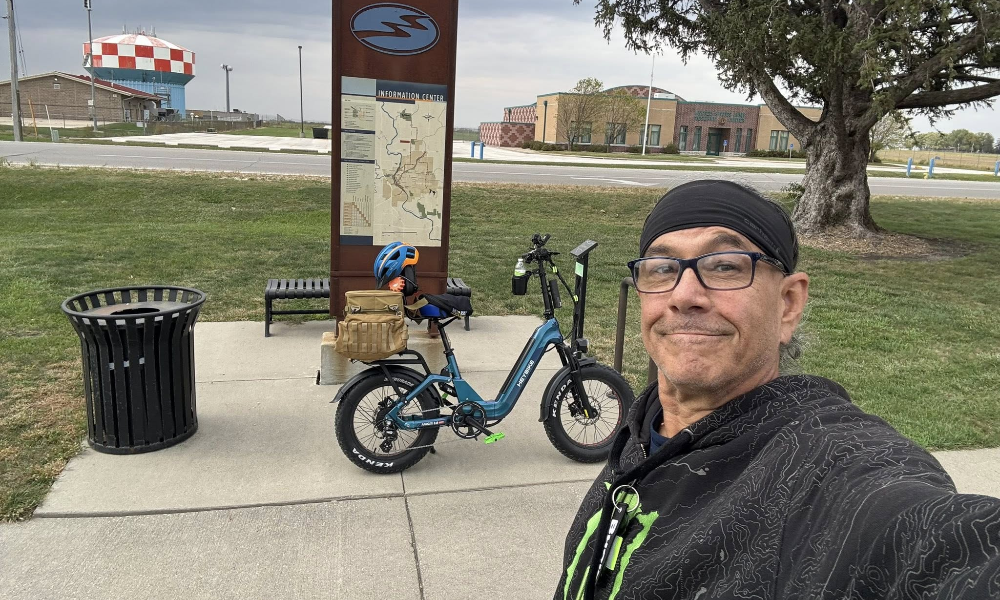
Pedal-assist electric bikes, as their name suggests, need assistance from the rider to maintain motion. The engine on these electric bikes must be turned on by pedaling. Electric power assists the rider after the motor starts. The rider can ride more casually due to this electrical aid.
An electric motor activates to boost your pedal force while you ride. When you first ride a pedal-assist bike, you will find it to be a smooth transition if you are accustomed to biking. The primary distinction is that it will accelerate more quickly as the motor smoothly engages. Additionally, you will feel significantly more torque.
What is a Pedal-Assist Electric Bike? And How Does It Work?
A pedal-assist electric bike enhances your pedaling with motorized assistance. This type of bike usually features sensors, including cadence and torque sensors. Either sensor can provide a smooth and efficient riding experience, but there are still some differences.
- Cadence Sensor: This sensor detects how fast you're pedaling (your rotations per minute). The faster you pedal, the more power the motor provides.
- Torque Sensor: This sensor detects how much force you're applying to the pedals. The harder you pedal, the more power the motor supplies.
Pedal-assist e-bikes come with multiple levels of assistance, allowing riders to choose how much help they want from the motor. E-bikes with pedal assist blend traditional biking with modern technology, offering a balanced and enjoyable riding experience.
What's the Difference between Pedal-assist Bikes and E-bikes?
Pedal-assist bikes are a type of battery assisted bicycle where the motor only activates when the rider is pedaling. This system provides extra power, making it easier to tackle hills or ride longer distances without as much effort.
In contrast, e-bikes often refer to electric bikes that can operate in either pedal-assist mode or throttle mode, where the motor can power the bike without any pedaling at all.
Both types rely on battery-assisted technology, and the level of motor engagement varies depending on the mode and bike type. All pedal-assist bikes are a type of battery assisted e-bike, but not all e-bikes are limited to pedal assistance.
The Benefits of Pedal Assist Electric Bikes
Pedal-assist electric bikes offer a multitude of advantages over traditional bikes, making them a fantastic choice for riders of all ages and fitness levels. Let's explore five key benefits below.
Less Sweaty and Tiring
Conquer your commute or errands without arriving drenched in sweat. Pedal-assist provides a welcome boost that takes the edge off, so you arrive feeling refreshed and ready to tackle your day. Hills will become manageable, and headwinds will feel like tailwinds.
Enhanced Fitness
While pedal-assist e-bikes make cycling easier, they still require pedaling, promoting physical activity. Riders can choose different levels of assistance, gradually building their fitness without overwhelming themselves. This makes pedal-assist e-bikes a great tool for improving cardiovascular health and overall fitness.
Extended Range
The electric motor expands your horizons. Explore farther on a single charge, conquering longer distances or tackling multiple errands with ease. No more worrying about running out of power – pedal-assist lets you explore further and experience the joy of cycling for longer.
Ease of Climbing Hills
Say goodbye to those dreading inclines! The motor kicks in as you pedal, smoothing out your ride and making those climbing feel effortless. Enjoy scenic routes and explore hilly terrains without breaking a sweat.
Great Options for All Riders
Whether you're a seasoned cyclist, a fitness newbie, or someone with physical limitations, pedal-assist electric bikes open up the world of cycling to everyone. The adjustable power levels allow you to tailor the ride to your comfort level, making cycling accessible and enjoyable for riders of all ages and abilities.
How to Choose the Right Pedal-Assist E-Bikes?
Selecting the right pedal-assist e-bike involves considering several factors to match your needs and preferences. Here are 5 factors to consider. If possible, you can have a test ride in local dealer shops.
- Riding Style: Do you cruise along flat paths or tackle hilly terrains? Consider a bike with a higher wattage motor (750w and above) for conquering hills.
- Range: How far do you typically ride? Choose a battery capacity that aligns with your riding distance.
- Comfort: Look for features like a wide, supportive seat and adjustable handlebars for a comfortable ride.
- Sensor Types: Decide between cadence and torque sensors based on your preference for pedal effort and responsiveness.
- Budget and Features: Balance your budget with desired features like integrated lights, racks, and fenders. More features often mean a higher price.
Conclusion
You can ride farther and longer on an electric bike and travel faster than a traditional bike thanks to the pedal assist and throttle. Which of these settings on your electric bike is appropriate for your needs, and what precisely do they do?
Pedal assist is probably the best option if you love the conventional biking experience but also want the opportunity to travel farther, faster, and with more rest time. You might prefer a throttle if you want the experience of being outside without fatigue.
Latest Stories
3000 Miles of Pure Joy: Greg’s Story with the Heybike ALPHA | Heybike Community
At 68, Greg conquered 3000 miles on his Heybike ALPHA ebike through Minnesota's trails. Every ride brought him fun, fitness, and freedom!
Freedom on Two Wheels: Ryan's Thrilling Rides on Mars 3.0 | Heybike Community
Ryan Davis shares his riding story on Heybike Mars 3.0 ebike. Have a look at his all-terrain adventures to see how the Mars 3.0 brings him true freedom.
From Walker to Rider: Darrel Rediscovering Youth and Joy on Ranger 3.0 Pro | Heybike Community
At 59, Darrel Abbe found youth and joy again riding the Heybike Ranger 3.0 Pro electric bike with his wife. Explore their story and the thrill of e-biking.



Share:
Torque Sensor vs. Cadence Sensor
Important Basics About Crank Arm